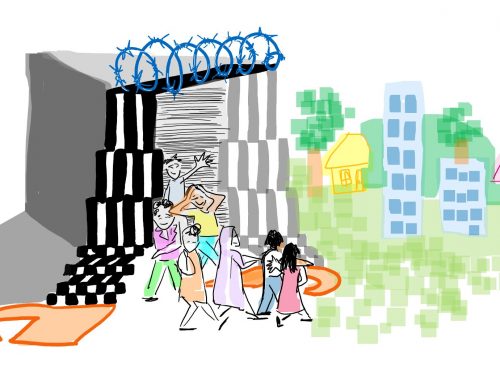HM Inspector of Prisons recently undertook an unannounced inspection of short-term holding facilities in the UK. Their report is well worth a look. And in particular, it is worth looking at their highlighted concerns, and we have included them below for ease of reference. And on page 30 there is a very helpful list of the 15 locations across the UK.
It is so important that these holding facilities remain in the public eye. We want to see an end to use of these facilities, but until that happens immediate reform is vital.
In the immediate term, we want to see:
• Implementation of an effective safeguarding policy
• An up to date and comprehensive report on the number and locations of such facilities
• Provision for visits by family and friends
• An end to the use of police stations as short-term holding facilities
• Individual property should not be confiscated unless there is a proven security risk
• The DDA scheme should be extended to short-term holding facilities
• Men and women should not be placed in the same facilities
• All food provided should meet people’s cultural needs, and there should be clear dietary standards
• Short-term holding facilities should not be used before a person is placed on a deportation flight.
HM Inspector’s priority concerns:
1. Leaders were not making sure good practice was consistent across all sites. This covered areas such as identifying and managing risks, induction, treatment of children, use of force and searching.
2. Data were not being collected reliably enough or used to identify trends so action could be taken.
3. Not all detainees with potential vulnerabilities were being identified, and information about their vulnerabilities was not always clearly noted in case files.
4. The Port of Felixstowe remained a poor holding facility. No plan had been confirmed for the refurbishment of the site.
HM Inspector’s key concerns:
5. Not all Border Force staff who came into contact with detainees, including minors, had undergone a Disclosure and Barring Service security check.
6. Not all use of force was recorded.
7. There was a lack of formal well-documented care planning for detainees identified as vulnerable, which could have contributed to their vulnerability. They included detainees with protected characteristics, for example women and those with disabilities or serious health conditions.
8. Unaccompanied children were held for too long and for over two hours longer on average than adults.
9. Safeguarding processes were not sufficiently robust, which meant children who were vulnerable to modern slavery might not have been identified.
10. Legal advice was not readily available to detainees.
Report on an unannounced inspection of Border Force short-term holding facilities 4
11. Not all facilities had showers.
12. Detainees did not have sufficient activities to keep themselves occupied. They could not exercise outside, and children’s toys were limited.
13. Not all detainees had access to the complaints process and complaint forms were only in English.





